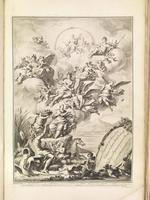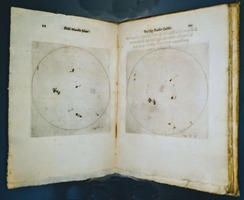LONGUE, Louis Pierre de.
Les princesses malabares, ou le célibat philosophique. Ouvrage intéressant et curieux avec des notes historiques et critiques.
A' Andrinople, Chez Thomas Franco, 1734,
in-12 (mm 165x100), pp. (12), 201, (3), bella legatura coeva in vitello, armi araldiche del conteAlexandreLa Rochefoucauld-Guyon impresse in oro entro ovale ai piatti, dorso a nervi con elementi vegetali e titolo, il tutto impresso in oro (cerniere nella parte di piede abilmente restaurate).Prima edizione di questo romanzo utopico ambientato in India. Opera satirica ed allegorica che, attraverso la descrizione dei costumi dell'Isola Malabar, analizza e critica diversi sistemi religiosi, veri e propri tiranni dell'umanità:"set amongst the sultanets and harems of the East, is an allegorical satyre on the history of the Catholich Church ... The lewd and blasphemous nature of the work ... all copies ordered to be torn to shreds and burned" (Invented and apocriphal travels, p. 120) Il volume è anche ricco di enigmi ed anagrammi, questi ultimi spiegati nelle tre pagine in fine. L'opera, che nelle prime pagine sentenzia"L'homme se jette naturellement sur tout ce qui lui est interdit", inclusi i libri messi all'indice, fu a propria volta proibita e data alle fiamme in seguito all' "Arrêt du Parlement du 31 décembre 1734", contribuendo così alla rarità dell'opera. Antico timbro della Bibliotheque Guyon al frontespizio, minime arrossature.
Howgego, Invented and apocriphal travels, D12. Barbier III 1026. Cioranescu 40825. INED 2944.Hartig, p. 46 (the work has also been attributed to Lenglet du Fresnoy and to P. Quesnel).Hartig, p. 46 (according to Hartig the work has also been attributed to Lenglet du Fresnoy and to P. Quesnel); Peignot, Livres condamnés, ii, p. 53; Cioranescu 40825; Weller, ii, p. 97; not in Negley; not in Trousson; not in Valette; not in Gove; not in Versins.






